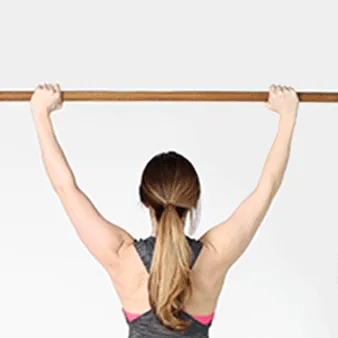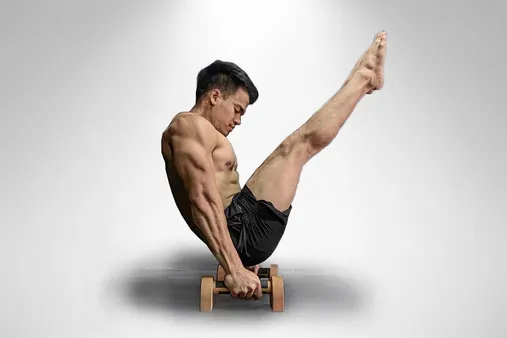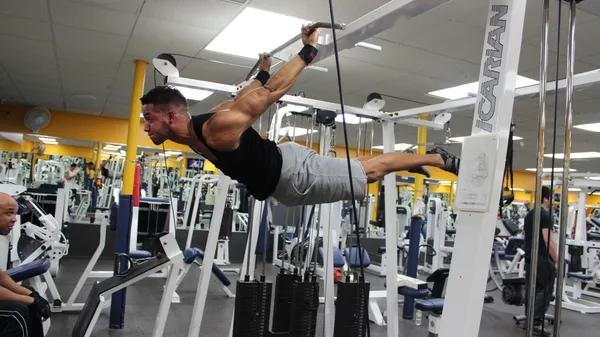Table of Contents
Kickstart your fitness journey with calisthenics! It's a realm where bodyweight exercises reign supreme, forging a path to strength, flexibility, and agility. Calisthenics is more than just a workout; it's a transformative experience that empowers you to harness your body's potential. Dive into the world of calisthenics with Kizworld and unlock the secrets to a fitter, healthier you!
Characteristic | Description |
|---|---|
Definition | Calisthenics encompasses a wide range of physical exercises performed using one's own body weight, aiming to improve strength, endurance, flexibility, and coordination. |
Origin | Calisthenics traces its roots to ancient Greek practices, with references dating back to the 5th century BC. |
Core Exercises | Fundamental calisthenics exercises include push-ups, pull-ups, sit-ups, lunges, and squats, each targeting specific muscle groups and promoting overall fitness. |
Benefits | Calisthenics offers numerous benefits, including enhanced muscle tone, increased cardiovascular health, improved balance and flexibility, and reduced risk of chronic diseases. |
Versatility | Calisthenics can be tailored to individual fitness levels, making it suitable for beginners to advanced practitioners. Moreover, it requires minimal equipment, enabling workouts anytime, anywhere. |
Functional Fitness | Calisthenics emphasizes movements that mimic everyday activities, improving functional fitness and enhancing performance in various aspects of life. |
Time-Tested | For centuries, calisthenics has proven its efficacy in developing strength, agility, and endurance, earning its place as a cornerstone of many fitness programs. |
Accessibility | Anyone can engage in calisthenics, regardless of age or fitness level. It adapts seamlessly to individual capabilities, making it a truly inclusive form of exercise. |
I. Definition of Calisthenics: Understanding the Basics
What is Calisthenics?
Calisthenics is a form of exercise that uses bodyweight as resistance to improve strength, endurance, flexibility, and coordination. It involves a wide range of exercises, including push-ups, pull-ups, sit-ups, lunges, and squats. Calisthenics can be performed anywhere, making it a convenient and accessible form of exercise.How to Do a Muscle Up
Benefits of Calisthenics
Calisthenics offers numerous benefits, including:
- Improved strength and endurance
- Increased flexibility and coordination
- Reduced risk of chronic diseases
- Improved balance and posture
- Enhanced functional fitness
The Best Calisthenics Gifts and Accessories
Types of Calisthenics Exercises
There are many different types of calisthenics exercises, each targeting different muscle groups and fitness goals. Some of the most common calisthenics exercises include:
Exercise | Target Muscle Groups |
|---|---|
Push-ups | Chest, triceps, shoulders |
Pull-ups | Back, biceps, shoulders |
Sit-ups | Abdominals |
Lunges | Legs, glutes |
Squats | Legs, glutes, core |
The Best Calisthenics Quotes and MotivationCalisthenics is a versatile and effective form of exercise that can be enjoyed by people of all ages and fitness levels. It is a great way to improve your overall health and fitness, and it can be done anywhere, anytime.
Definition of Calisthenics: Understanding the Basics
II. Types of Calisthenics Exercises
Calisthenics exercises can be broadly categorized into the following types:
Bodyweight Exercises
These exercises utilize only your body weight as resistance, making them accessible and convenient. Examples include push-ups, pull-ups, squats, lunges, and planks.How to Do a Push-Up
Gymnastics Exercises
Gymnastics exercises incorporate elements of acrobatics and require specialized equipment such as rings, bars, and mats. They focus on strength, flexibility, and coordination.Gymnastics
Street Workout Exercises
Street workout exercises are performed on outdoor equipment such as bars, benches, and walls. They emphasize explosive movements and dynamic skills.Calisthenics and Street Workout
Exercise Type | Equipment | Focus |
|---|---|---|
Bodyweight Exercises | Body weight | Strength, endurance, flexibility |
Gymnastics Exercises | Rings, bars, mats | Strength, flexibility, coordination |
Street Workout Exercises | Outdoor equipment | Explosive movements, dynamic skills |
Each type of calisthenics exercise offers unique benefits and challenges, allowing individuals to tailor their workouts to their specific goals and fitness levels.
Types of Calisthenics Exercises
III. Benefits of Calisthenics
Improved Physical Fitness
Calisthenics offers a comprehensive workout that engages multiple muscle groups, enhancing overall physical fitness. It improves strength, endurance, flexibility, and coordination, leading to a well-rounded physique.
- How to Do a Muscle-Up: A Step-by-Step Guide
- How to Get Started with Calisthenics as a Beginner
- How to Do a Squat: A Step-by-Step Guide
Benefit | Description |
|---|---|
Increased Strength | Calisthenics exercises challenge muscles against body weight, leading to increased strength and power. |
Improved Endurance | Sustained calisthenics workouts enhance cardiovascular health and muscular endurance, allowing for longer and more intense physical activities. |
Enhanced Flexibility | Calisthenics movements involve stretching and dynamic exercises, improving range of motion and reducing muscle stiffness. |
Benefits of Calisthenics
IV. Incorporating Calisthenics into Your Fitness Routine
Start Gradually
Begin by incorporating calisthenics exercises into your existing fitness routine. Start with a few exercises and gradually increase the frequency and intensity as you progress. This will help your body adapt and reduce the risk of injuries.
Related: How to Get Started with Calisthenics as a Beginner
Exercise | Beginner | Intermediate | Advanced |
|---|---|---|---|
Push-ups | 10-15 reps | 20-30 reps | 30+ reps |
Pull-ups | 5-10 reps | 10-15 reps | 15+ reps |
Squats | 20-30 reps | 30-40 reps | 40+ reps |
Listen to Your Body
Pay attention to how your body responds to calisthenics exercises. If you experience any pain or discomfort, stop the exercise and consult with a healthcare professional. It's important to listen to your body and avoid overexertion.
Related: The Most Common Calisthenics Mistakes and How to Fix Them
Stay Consistent
Consistency is key when it comes to calisthenics. Aim to incorporate calisthenics exercises into your routine at least 2-3 times per week. Regular practice will help you build strength, endurance, and flexibility.
Related: How to Design Your Own Calisthenics Routine and Program
Enjoy the Process
Calisthenics should be an enjoyable experience. Choose exercises that you find challenging but not overwhelming. Focus on proper form and technique, and don't be afraid to modify exercises to suit your fitness level.
Related: The Best Calisthenics Exercises and Variations
Additional Tips
- Warm up before each calisthenics workout.
- Cool down after each calisthenics workout.
- Stay hydrated by drinking plenty of water.
- Eat a healthy diet to support your calisthenics training.
- Get enough sleep to allow your body to recover.
Incorporating Calisthenics into Your Fitness Routine
V. Conclusion
Calisthenics is a great way to get in shape and improve your overall health. It is a versatile form of exercise that can be done anywhere, anytime. With a little creativity, you can create a calisthenics workout that is challenging and fun. So what are you waiting for? Give calisthenics a try today! Calisthenics is a great way to improve your strength, flexibility, and endurance. It is also a great way to relieve stress and improve your mood. If you are looking for a fun and challenging way to get in shape, calisthenics is a great option.